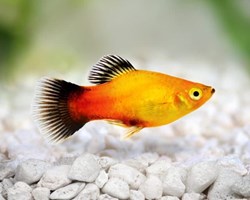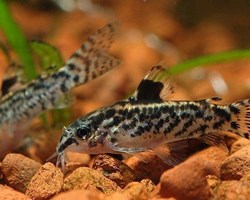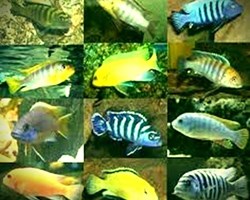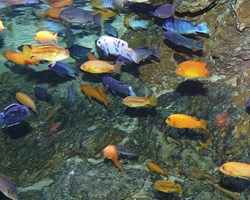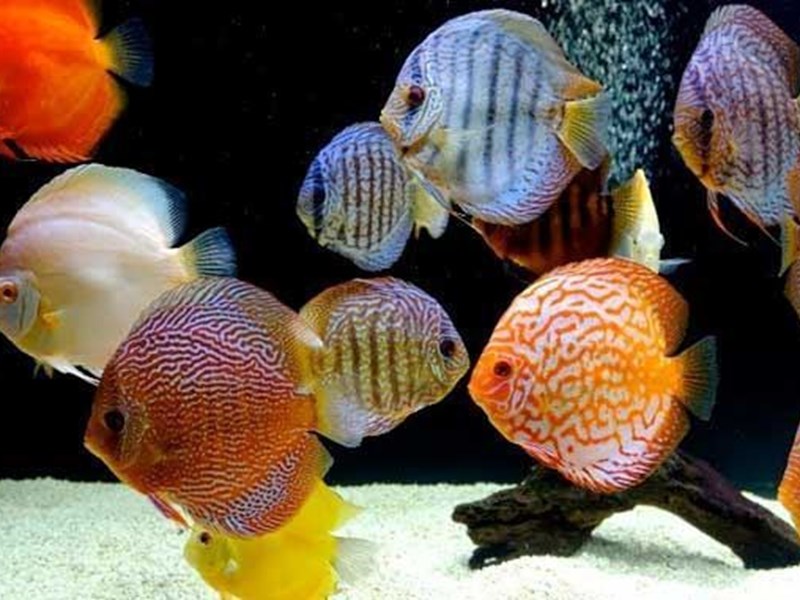
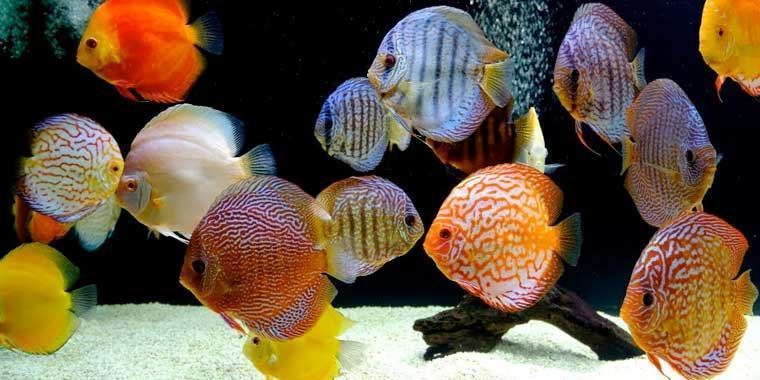
The king of the aquarium, the discus fish is one of the most beautiful freshwater fish for our aquariums.
Peaceful, but larger than most tropical fish, these fish light up the room they're in.
Notoriously difficult to care for, but so rewarding when kept properly, discus fish are the pride and joy of those who keep them.
The beautiful colors of this fish change depending on stress levels, age, diet, and aquarium conditions.
They are prized in the aquarium trade for their brilliant appearance and schooling behavior.
APPEARANCE OF DISCO FISH:
Discus fish are named for their disk-shaped appearance.
Some variations are more triangular or round than others, but all are thin and flat-looking.
They have rounded dorsal and anal fins that add to the overall shape of their body, as well as pronounced pelvic and caudal fins.
The body can be 20 to 25 centimeters long, which makes them a great fish for aquariums.
Their popularity comes from the intense colors they can have:
- green.
- bright blues.
- reds.
- browns.
- yellows.
They are much brighter when bred in captivity compared to their wild counterparts.
The coloration comes together in vertical and horizontal stripes that cover the fins as well as its body.
They become more pronounced and will light up when threatened which is beautiful but should be avoided as they are sensitive to stress.
Their eyes also come in a variety of colours, with red being highly prized, red eyes are not a sign of health even though this myth is frequently spread.
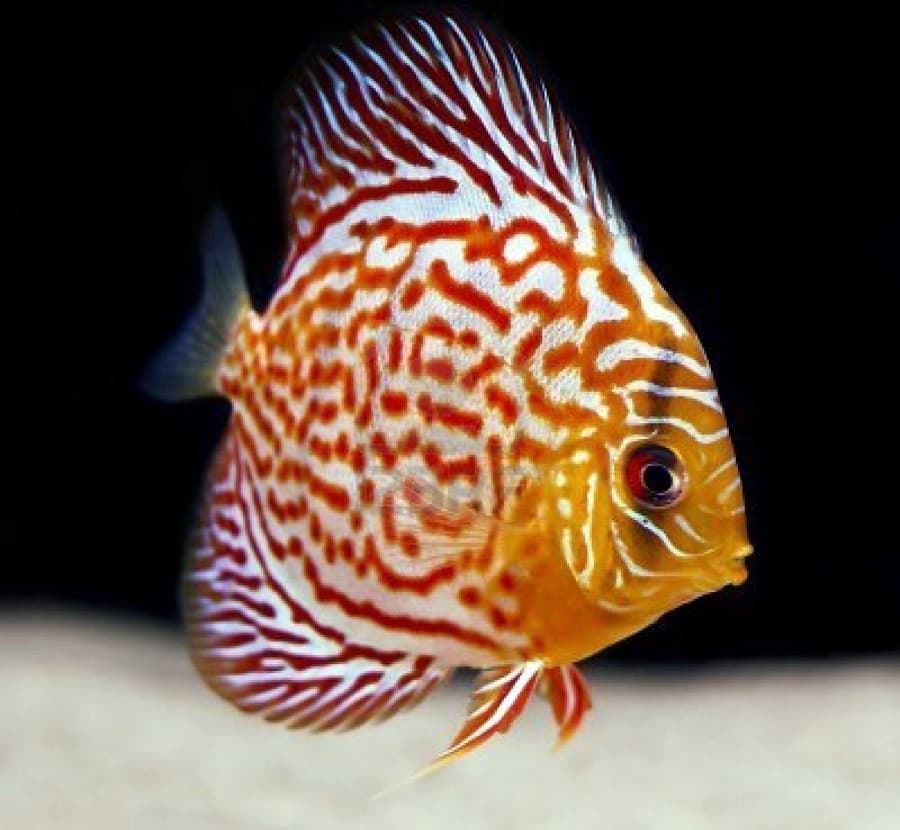
DISCO FISH CARE:
Discus fish breed in the flood plains of the Amazon, where "floods" can change the water level in meters of depth as it rises along a shallow flood plain.
This flooding provides much more room for growth, breeding, and best of all, feeding.
They are found in cracks and breaks in the flow of water, such as small inlets or among fallen trees, where their broad body is protected from the current.
These areas are shaded, and the riverbed is soft sediment.
The wild conditions of discus fish can be replicated in the aquarium, however it can be challenging for beginning hobbyists.

DISCO FISH AQUARIUM CONDITIONS:
These fish require higher temperatures than most fish at 82-88°F.
Maintaining this warmer temperature will reduce the chance of illness and death, it can be maintained by using a good quality heater.
Amazon water is soft and slightly acidic, with a pH between 6 and 7.
Before buying the fish, check the pH and the temperature in which they have been raised to avoid drastic changes that could be fatal.
Your aquarium water needs to be dechlorinated and treated with formulas that neutralize tap water.
The flow should be weak, this can be broken up by using a spray bar or by using driftwood or trim.
Vertical wood can also be used to break the flow of water, just make sure these pieces of wood can't damage the side of the disc when it swims past.
They prefer soft to medium sediments as they often forage in the substrate and larger chunks could injure them while searching for food.
Plants like Amazon Sword Plant or Dwarf Hair Grass are easy to add to your aquarium and provide oxygen to your fish.
Plants also act as a nutrient sink, meaning drops in water quality are rarer.
THE SIZE OF AQUARIUM THAT THE DISCO FISH NEEDS:
As these fish need to be in schools of at least 5, a 250 liter aquarium is the smallest they will thrive in.
They prefer larger aquariums, more than 500 liters means that there will be less drastic changes in water conditions and they will have the space they want.
One discus fish for every 32 liters is ideal.
DISCO FISH AQUARIUM COMPANIONS:
Discus can often be shy, but this can be helped by surrounding them with a couple of other fish (known as dither fish) to show them that they are not in danger.
Fish that come from the very warm waters of the Amazon are a great place to start, and Shoal Tetras can be amazing.
These include:
- Neon tetras.
- Ruminant Nose Tetras.
- Amber tetras.
They are beautiful and easy to care for.
Other big fish they can be paired with are Gouramis, Bolivian Rams, and Pencil Fish.
Marbled or Neon Hatchet fish are great fish to pair with, because hatchet fish occupy the highest level of the aquarium.
Almost all Coridoras would pair excellently with these fish, however they often require cooler waters.
The Sterbai Cory Catfish is the best type of catfish to include because they live in warmer waters while occupying a different level of the aquarium and are extremely peaceful.
These fish cannot be paired with aggressive fish, and some fish try to eat the mucus fur of the discus which injures them.
Angelfish are sometimes not a problem, while other times they are intimidated and outcompeted by the limited food supply.
It really comes down to the individual temperaments of each of the fish, so if you want to keep these fish together, do so with caution.
They are also compatible with any of the larger species of snails and shrimp, but be careful that they are not small enough to be eaten or harmed.
KEEPING DISCO FISH TOGETHER:
The discs need to be kept together, and those of different varieties will also stick together, meaning they can have wide color variations.
A minimum of 5 is recommended, but more will look better and create a more robust group.

FOOD FOR DISCO FISH:
Discus are omnivores, and in the wild, they eat mostly green plant matter such as algae or fallen food.
A third of their diet also comes from arthropods, such as insects or crustaceans, and invertebrates such as copepods and amphipods.
For the best coloration, they should be given a variety of foods.
Different types of flake foods such as spirulina and tropical fish flakes, combined with algae or shrimp pellets, can make up the vegetable part of your diet.
Live foods like bloodworm, bloodworms, and brine shrimp are good for them and can make the colors show bright.
Beef heart, although not natural, is commonly fed and harmless.
They will need to feed every day, and only what they eat in a 3-5 minute window.
Any excess food should be cleaned up after 5 minutes, as excess food can lead to health problems or poor quality water.
Since they have a pecking order, you should also keep an eye on your fish to make sure all of them can eat and are not blocked by larger tank mates.
If this happens consistently, you can put food on both sides of the tank.
CARE OF DISCO FISH:
The best way to ensure fish health is through regular observation and maintenance.
Discus fish are sensitive to changes in water parameters. If they are unable to balance, leaning against driftwood or against the side of the aquarium, then it could indicate a nitrite spike.
These fish need weekly full tank cleanings, with 25% water changes and the sediment cleaned with a gravel vacuum to remove excess food.
Water needs to be tested frequently when it is new, and this can be done with home kits or in stores.
Due to their need for warmer temperatures, the water temperature needs to be measured daily, and this can be done with a permanent thermometer in the aquarium.
Parasitic infections can also cause fish to scratch their sides on ornaments or sediment. Reddened areas may also appear, with rapid breathing.
A combination of water changes and parasite removal will usually resolve this.
Monthly deworming solutions are available at Glu Glu Pet.
As for observation, spend time observing your fish and if you notice changes in behavior or coloration, it could be an indication that something is wrong.
BREEDING OF DISCO FISH:
Fish farming can be challenging, but discus farming is a real challenge. They are very difficult to breed, however this makes them very rewarding as well.
They have very specific requirements for breeding, and all the parameters mentioned above (in the aquarium setup section) must be perfectly maintained.
It is advised to use a spawning cone, which provides the ideal place for them to lay their eggs, and then a wire tube can be placed over the eggs to prevent them from being eaten.
Some breeders then separate the female as she is more likely to cannibalize her fry, and the male will raise the fry on his own.
The fry hatch after three days, and in another three days they will be independent swimmers, feeding on the mucus produced by their parents.
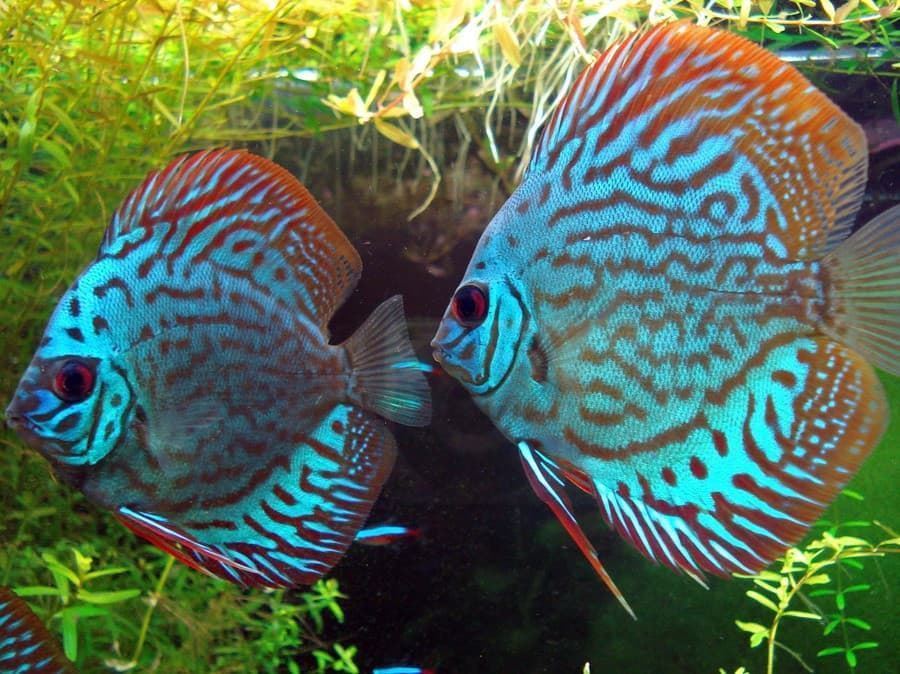
Other articles that might interest you:

